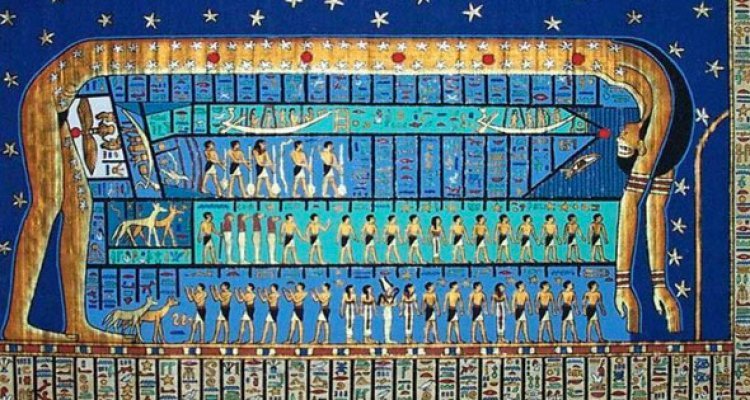The Egyptian New Year

The Egyptian year in the ancient Egyptian language is known as "rnpt," a feminine term meaning renewal, as explained in texts from the era of the pyramids. Since 6255 BC, the ancient Egyptians gifted the world with the oldest known calendar, celebrated in Egypt on the 11th of September each year. The first day of the Egyptian year (6263) marks the beginning of the Coptic calendar, primarily based on the ancient Egyptian calendar, often referred to as the "stellar" or "solar" calendar.
Throughout its historical epochs, ancient Egyptian civilization displayed remarkable achievements in astronomy. This is evident in the ceilings of temples, tombs, and coffins, which depicted celestial bodies and astronomical phenomena. Due to their deep interest in astronomy, some ancient Egyptians designed the ceilings of their tombs in the shape of vaulted heavens, believing that it would benefit the deceased in the afterlife. The reliance of ancient Egyptians on the annual flooding of the Nile influenced their careful observation and calculation of its timing, which led to stargazing and star monitoring.
Ancient Egyptians measured their units of time (year, season, month, week, and day) based on the movements of celestial bodies such as the moon, the sun, and the star Sirius. They also divided the year into three seasons, primarily based on the agricultural cycle in ancient Egypt. The agricultural cycle, in turn, depended on the annual flooding of the Nile. Based on this, they divided the months of the year equally. It's worth noting that one of the most important sources for ancient Egyptian calendar units and measures is the medical papyrus known as "Ebers," dating back to the reign of King Amenhotep I, which recorded lunar month names along with civil "solar" seasons.
Ancient Egyptians marked the beginning of their year with the month of "Thoth," in recognition of the god of knowledge, writing, and wisdom. The second month, "Paopi," represented the god of agriculture. The third month, "Hathor," was dedicated to the goddess of beauty. The fourth, "Koiak," honored the god of generosity. The fifth month, "Tobi," represented the god of rain and the cities of Tjebu and Ta-she. The sixth month, "Meshir," was associated with the god of storms. The seventh month, "Paremhat," signified the god of heat. The eighth month, "Paremoude," was dedicated to the god of harvest. The ninth month, "Pashons," represented the god of darkness. The tenth month, "Paoni," was linked to the god of minerals. The eleventh month, "Epip," signified the joy of the heavens. The twelfth month, "Mesori," marked the birth of the god Ra.
It's worth mentioning that Egypt used several royal calendars throughout its historical eras, which recorded years based on the reigns of kings across different periods. These include the ancient Egyptian royal calendars, Greek royal calendars, and Roman royal calendars.
Sources:
- Mohammed Saleh, "The Ancient Egyptian Calendar."
- "The Historical Chronology of Ancient Egypt Throughout Its Eras in Adopting Calendar Systems."
- Massimiliano Franci, "Astronomy in Ancient Egypt," translated by Fatma Fawzi.
